
LONDON- On any particular day, skies over the globe—tracked by FlightRadar24—record activity of over 20,000 planes simultaneously aloft. London Heathrow Airport (LHR), hub of British Airways (BA), and New York City (JFK) both played crucial roles as epicenters of intense airborne traffic.
Europe’s bustling airspace, especially between major hubs like Paris Charles de Gaulle (CDG) of Air France (AF) and Frankfurt Airport (FRA) of Lufthansa (LH), remains among the world’s busiest. Notably, the corridor between London (LHR) and Dublin (DUB) supports Europe’s most flown international route.
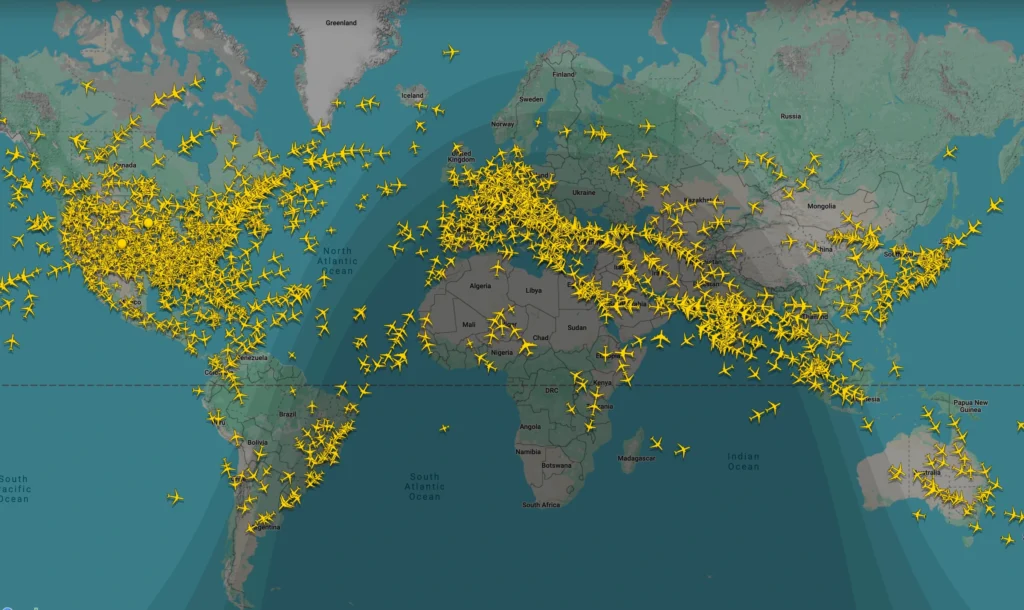 Photo: FlightRadar24
Photo: FlightRadar24Busiest Airspace in the World
The world’s most crowded airspaces are not only defined by the sheer number of flights but also the density of jet streams and intersecting routes, especially in metropolitan clusters.
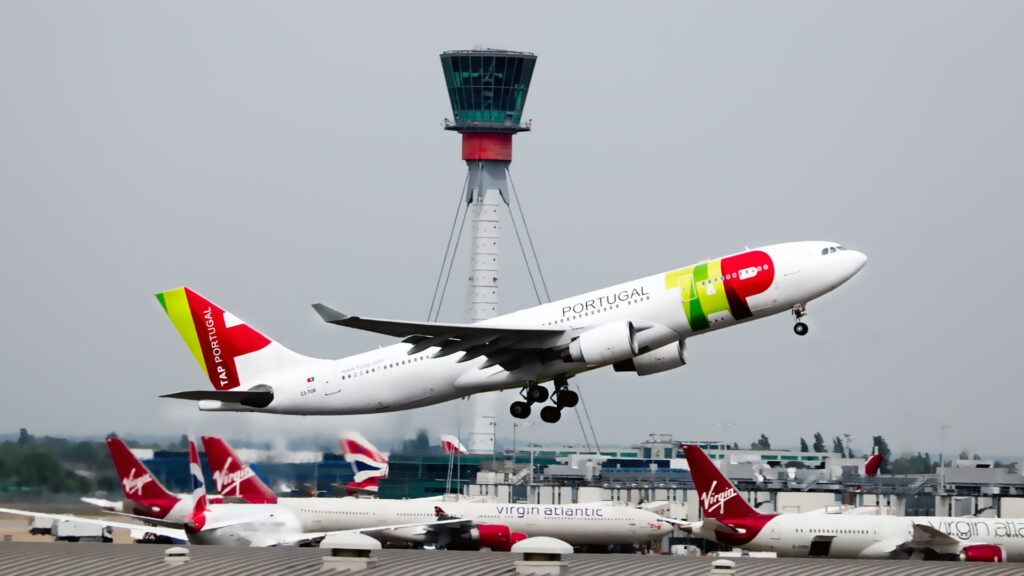 Photo: Wallpaper Flare
Photo: Wallpaper Flare1. Western Europe: Dense Routes and Congested Hubs
- Major zones stretch from southern England, Germany, and the Low Countries through France, Italy, and Spain.
- London-Heathrow (LHR), Paris-CDG (CDG), Frankfurt (FRA), and Amsterdam Schiphol (AMS) experience near-continuous airborne queues.
- The London (LHR)-Dublin (DUB) flight path sees an annual passenger volume exceeding 4.5 million, underlining its status as Europe’s busiest international connection.
- Popular intra-European air routes include Paris-Nice (NCE), Madrid-Barcelona (BCN), Rome-Catania (CTA), and Paris-Toulouse (TLS).
- Aircraft frequently reroute over the southeastern tip of Turkey to avoid airspace over Syria and Iraq, further tightening regional congestion.
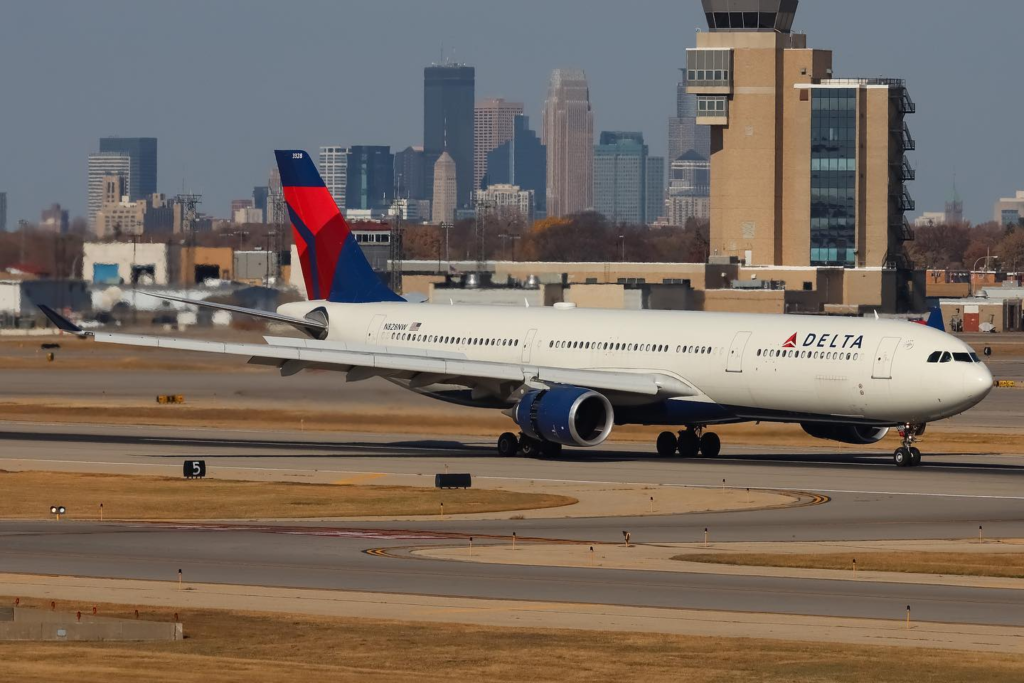 Photo: JFK Spotting
Photo: JFK SpottingNorth America: Clustered Mega Airports
2. New York City–Philadelphia–Washington D.C.
- New York City boasts six airports, including John F. Kennedy International (JFK), Newark Liberty (EWR), and LaGuardia (LGA), with a cumulative throughput surpassing 147 million passengers annually.
- The corridor also includes Philadelphia International (PHL), Ronald Reagan Washington National (DCA), and Dulles International (IAD), creating one of the densest traffic pockets globally.
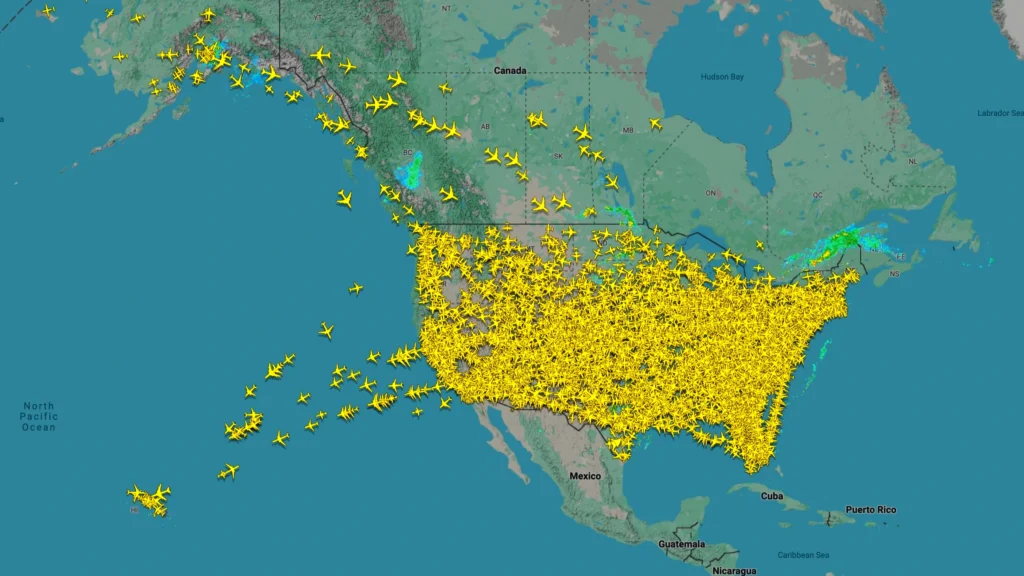 US Domestic Flights at Any Given Day | Photo: FlightRadar24
US Domestic Flights at Any Given Day | Photo: FlightRadar243. Los Angeles and the San Francisco Bay
- LAX (Los Angeles International) sees over 74 million passengers per year, supporting both urban and transpacific flows.
- The Southern California airspace integrates LAX, Long Beach (LGB), Burbank (BUR), John Wayne (SNA), and Ontario (ONT), collectively processing over 100 million annual passengers.
- Daily, over 120 flights link LAX and San Francisco International (SFO), reflecting significant intercity demand.
4. Chicago and South Florida
- Chicago’s O’Hare (ORD), Midway (MDW), and Rockford (RFD) airports serve more than 96 million passengers, reinforcing Chicago’s standing as a Midwest nexus.
- South Florida’s Miami (MIA), Fort Lauderdale (FLL), and Palm Beach (PBI) airports contribute to the region’s skyway saturation, each ranking among the United States’ most trafficked.
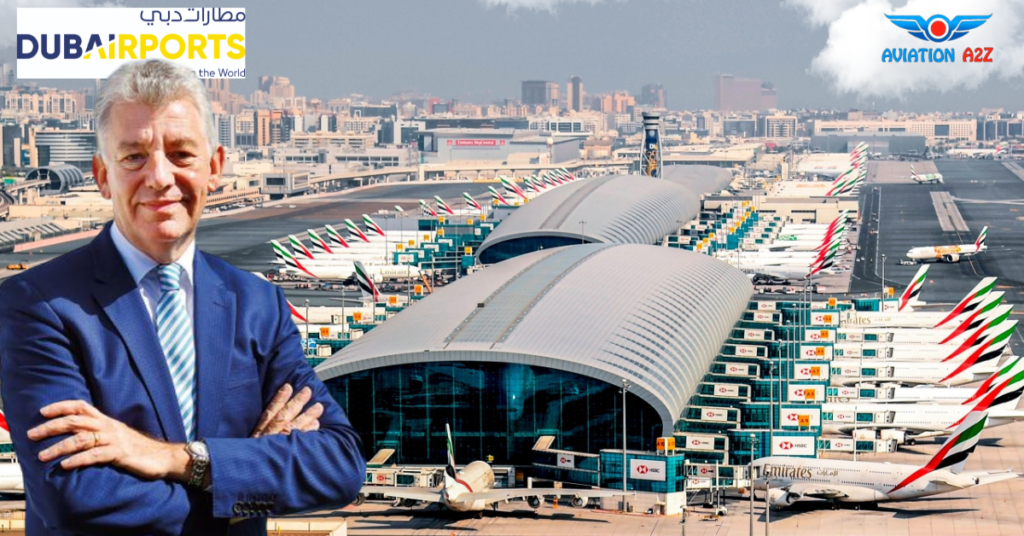 Photo: Credit to Creator, Compounded by Aviation A2Z
Photo: Credit to Creator, Compounded by Aviation A2ZAsia and the Middle East: Rapid Growth and Airspace Pressure
5. Tokyo and East Asia
- Tokyo’s Haneda (HND) and Narita (NRT) airports create the world’s third-busiest city airspace system, handling over 111 million yearly passengers.
- East Asian corridors—Shanghai Pudong (PVG), Beijing Capital (PEK), and Hong Kong International (HKG)—rank among the top ten globally, with Shanghai alone serving nearly 97 million.
6. The Persian Gulf
- Dubai International (DXB), Abu Dhabi International (AUH), and Doha Hamad (DOH) airports anchor one of the world’s fastest-growing airspace zones, now handling tens of millions of international travelers annually.
- The region’s aviation rise is notable, with Dubai (DXB) leading in total international passenger volume.
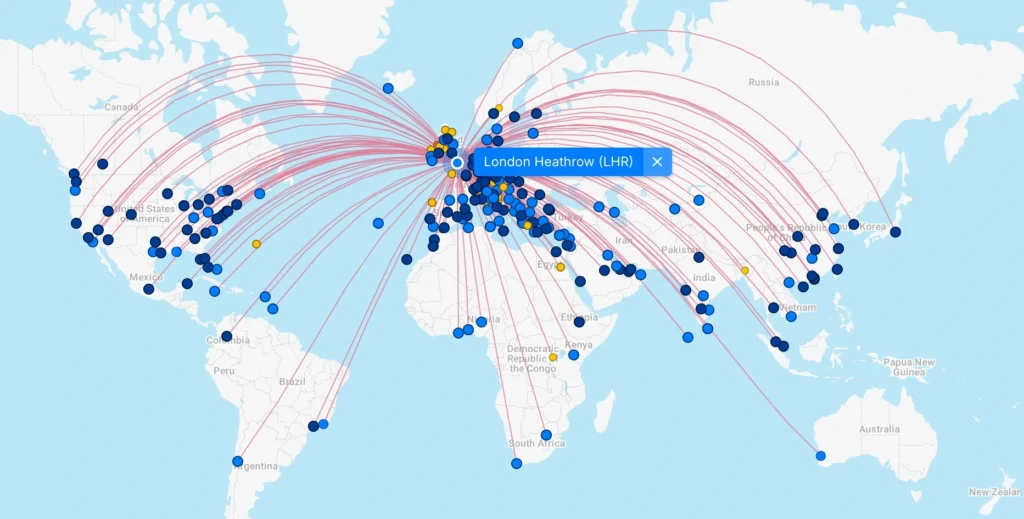 Photo: FlightConnections
Photo: FlightConnectionsKey Factors Behind Airspace Congestion
City Airport Systems by Passenger Volume
| 1 | London | LHR, LGW, STN, LTN, LCY, SEN | 168 million |
| 2 | New York | JFK, EWR, LGA, HPN, ISP | 147 million |
| 3 | Istanbul | IST, SAW | 113 million |
| 4 | Tokyo | HND, NRT | 111 million |
| 5 | Paris | CDG, ORY, BVA | 105 million |
| 6 | Atlanta | ATL | 104 million |
| 7 | Los Angeles | LAX, LGB, BUR, SNA, ONT | 103 million |
| … | … | … | … |
- London leads as the busiest multi-airport city system, outpacing even New York’s vast network.
- Hartsfield–Jackson Atlanta International Airport (ATL) remains the world’s busiest single-airport hub.
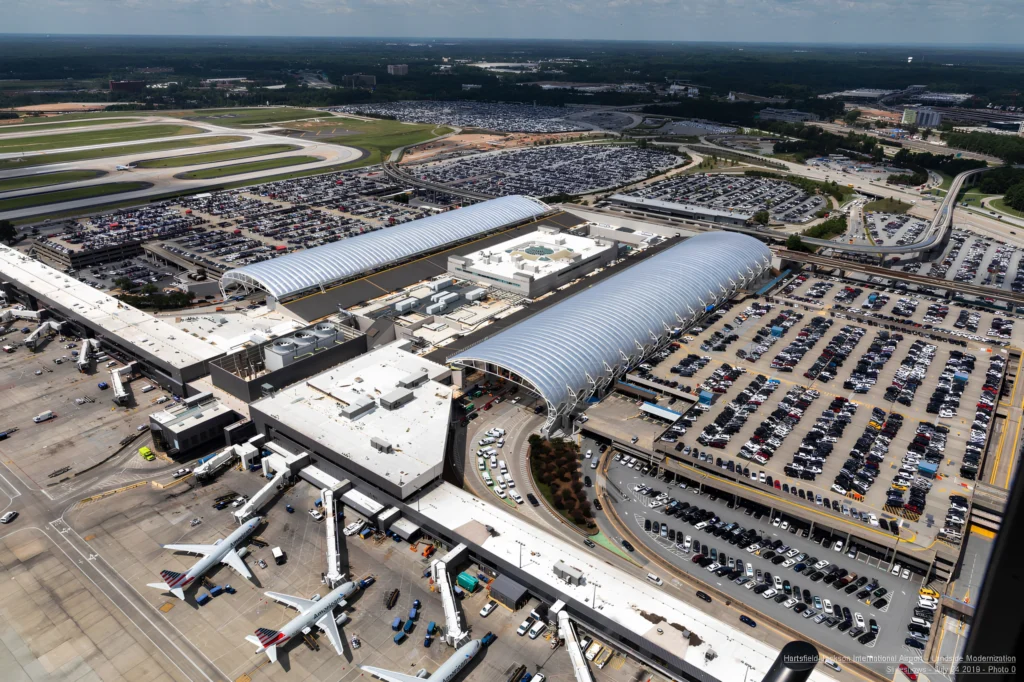 Photo: Atlanta International Airport
Photo: Atlanta International AirportWhy These Airspaces Are So Busy
- Economic concentration draws airlines (e.g., British Airways- BA; Delta Air Lines– DL; Emirates– EK) to key city pairs.
- Short distances between urban centers in Europe and North America amplify frequency and volume.
- Diverse flight connections, from regional to long-haul, funnel through these hubs, driving transit numbers higher.
Managing Congestion
- Real-time flight tracking and predictive tools, like NASA’s FACET program, help controllers efficiently route aircraft and avoid gridlock.
- Rerouting to avoid conflict zones impacts available skyways, intensifying traffic on select lanes.
 Photo- iGA Istanbul Airport
Photo- iGA Istanbul AirportEmerging Trends in Airspace Usage
- Growth in East Asian and Middle Eastern cities’ airport systems (e.g., Beijing Daxing – PKX, Istanbul Airport – IST) signals shifting global air traffic patterns.
- The ongoing infrastructural expansions underscore the challenge of balancing efficiency, safety, and rising demand.
Countries with the Most IATA-Registered Airports
- The United States holds a commanding lead, with nearly four times as many airports as Brazil, the next closest nation. Its immense network supports both commercial and private aviation, crucial for a country with significant territory and population.
- Brazil, Australia, and Mexico maintain expansive airport networks to connect their vast, often remote, territories with urban centers.
- Canada features a high number of airports relative to its population, due to its vast geography and northern communities reliant on air connectivity.
- European nations such as the United Kingdom, Germany, and France are well-represented, reflecting their significant roles in global air travel and regional integration.
- Russia leverages its extensive landmass with a large network of airports, even as commercial operations are concentrated in a subset of major hubs.
- Argentina rounds out the top ten, illustrating the importance of air travel across South America’s southern cone.
| 1 | United States | 15,873 |
| 2 | Brazil | 4,919 |
| 3 | Australia | 2,180 |
| 4 | Mexico | 1,485 |
| 5 | Canada | 1,425 |
| 6 | United Kingdom | 1,043 |
| 7 | Russia | 904 |
| 8 | Germany | 838 |
| 9 | Argentina | 756 |
| 10 | France | 689 |
Future Outlook
Intensifying passenger numbers and urbanization trends will likely push new airports and routes into future rankings.
As technology and operational concepts evolve, airspace management will continue to adapt to ensure safety, sustainability, and capacity.
Stay tuned with us. Further, follow us on social media for the latest updates.
Join us on Telegram Group for the Latest Aviation Updates. Subsequently, follow us on Google News
Busiest Airports in the World 2024, No. 7 Will Surprise You
The post Top Busiest Airspace in the World in 2025 appeared first on Aviation A2Z.














